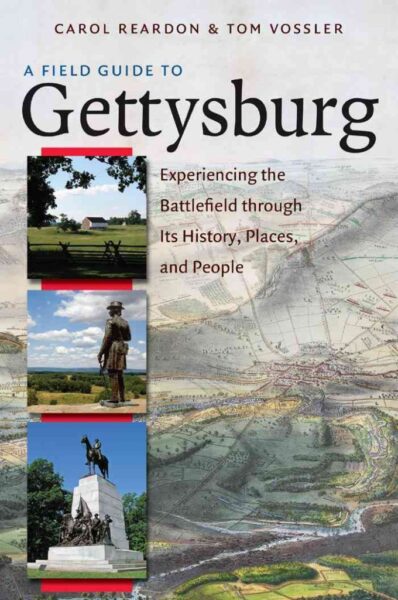In early November 1903, nearly 20,000 people gathered in Petersburg, Virginia, anxiously awaiting a reenactment of the Battle of the Crater. For one seventeen year old, Douglas Southall Freeman, the event would prove pivotal, convincing him that the stories of the brave men in gray who had fought that day must be preserved. But for the city’s African American residents, most of whom did not attend the commemoration, the day reflected a common pattern in Civil War remembrance: the role played by the United States Colored Troops (USCT) had been entirely omitted. There would be no gallant charge by USCT veterans and no reenactment of their heroic efforts by any of their descendants. Thirty-four years later at yet another reenactment of the battle, the same would hold true.
Using the Battle of the Crater as his lens, Kevin M. Levin explores the complex and evolving relationship between race and Civil War memory. How was it, he asks, that an entire division of the USCT could be erased from popular interpretations of the battle? How would they be restored and to what extent? And perhaps most importantly, what are the long-term implications of the ways in which we as a nation remember our bloodiest war?
In the early morning hours of July 30, 1864, Union soldiers ignited 8,000 pounds of gun powder beneath Confederate lines commencing the Battle of the Crater. In the melee that followed of Union attacks and Confederate counterattacks, the Fourth Division, composed entirely of USCT, engaged in its first combat service of the war. Although the black soldiers shared in the disappointment of the failed attack, their post-battle accounts reveal that they believed that their participation—their sacrifice and valor—would prove instrumental in securing their rights as full citizens. Many northern newspapers, however, paid scant attention to their service. Other papers, along with some white soldiers, portrayed the USCT’s fighting prowess in a negative fashion or blamed the “panic-stricken retreat” of the colored soldiers for the Union defeat (24). Though white U.S. soldiers might acknowledge that emancipation was necessary to secure Union victory, observes Levin, most retained deeply prejudiced and racist views of their black comrades.
The battle also proved to the first time that the men of the Army of Northern Virginia encountered black soldiers, many of them former slaves. But unlike their foes, Confederate soldiers wrote candidly about their encounter with black soldiers in the days and weeks after the battle. In letters and diaries, they recounted their rage at seeing black men in blue uniforms and told in great detail of the hand-to-hand fighting that had ensued. Levin thoughtfully observes that Confederates’ encounter with an entire division of armed black men can only be understood within the context of the ever-present fear of slave rebellions. Recalling Nat Turner’s insurrection, which claimed the lives of more than 60 white people in nearby Southampton County in 1831, along with other failed attempts such as those by Gabriel (1801), Denmark Vesey (1823), and most especially John Brown (1859), Confederates looked at the USCT men not as soldiers but as insurrectionist slaves bent on destroying the white South. Such, observes Levin, was the reason that Confederate soldiers could provide such vivid descriptions of bayoneting surrendering black men or the executions that followed the next day.
In the years after the war, however, it seemed that Confederates were as willing as white Union soldiers to forget the role of African American soldiers in the battle. Given the racial dynamics of the Reconstruction era, Levin observes that it was in the best interest of ex-Confederates to omit references to the slaughter of USCT soldiers or even their presence in the battle at public commemorations. But in individual memoirs, where the political ramifications proved less damning, some Confederate veterans clung to their vituperative accounts. Ironically, the man who claimed responsibility for the Confederate counterattack, General William Mahone of Petersburg, proved to be a champion of black political rights and patronage through his leadership of the Readjuster Party in the 1870s and early 1880s. Though the sources may not be available, one is left to wonder how the black veterans of GAR Post 54 of Petersburg recalled and commemorated the battle—and most especially how they thought about Mahone. It seems likely that many of them would have supported the Readjuster Party and benefitted from its patronage.
Equally as important is Levin’s evaluation of the battle that raged between followers of Mahone and his opponents who charged that his support of black political rights betrayed the Confederate Cause. Attacks on Mahone’s generalship were often conflated with those condemning his political position, belying the notion that the Lost Cause was supported by a Solid South.
In the final chapters, Levin chronicles efforts to commemorate the battle and transform the Petersburg battlefield into a national park, albeit one that celebrated only white Union and Confederate soldiers during the early 20th century. But by the 1960s, the Civil Rights Movement had begun to chip away at such an interpretation. Scholars as well as the popular magazines Jet and Ebony recalled the role of USCT soldiers in battles such as the Crater. After 1989, in the wake of Glory and Ken Burns’ wildly successful PBS series, more Americans, both white and black began to accept and expect that stories of the USCT be included in any narrative of the war—especially the Battle of the Crater.
In examining a single battle across such a wide expanse of time, Levin has given us a wonderful insight not only into the ever-evolving nature of Civil War memory, but he has also helped illuminate the interplay between race and politics in our collective rendering of the war.
Caroline M. Janney is an Associate Professor of History at Purdue University and the author of Burying the Dead but Not the Past.





